From May 21st to 23rd, the 3-day 2024 Nigeria Lagos HVAC Exhibition (MEGA CLIMA) came to a perfect end! During the period, the KLC booth attracted the attention of many exhibitors and visitors. The team members enthusiastically introduced the characteristics and advantages of filters and equipment to visitors, and won the recognition and favor of many potential customers.
Let's review the wonderful moments of 2024 MEGA CLIMA together!
During the 3-day exhibition, KLC fully displayed the clean room solutions and new refrigeration and HVAC filter products of the refrigeration and HVAC industry, and had in-depth exchanges with professionals in West Africa and surrounding areas, opening up a broader clean industry space and market.

Through this exhibition, the confidence guarantee of KLC products was brought to the Nigerian HVAC and refrigeration market, and new possibilities were brought for the application of HVAC and refrigeration products in the new era and various industries. Every separation is for a better meeting next time. Thank you for your trust and recognition of KLC, and thank you for your expectations of new friends! I hope to work with you in the future to contribute to clean production space and low-carbon life!
We are honored to announce that KLC has officially joined NAFA. This important milestone marks KLC's further development and commitment in the air purification industry.

The National Air Filtration Association (NAFA) brings together air filter and component manufacturers, sales and service companies, and HVAC and indoor air quality companies.
NAFA’s mission is “To be The Global Source for Expertise, Education and Best Practices in Air Filtration.” NAFA strives for this goal by sourcing the best minds in air filtration to create substantial and influential education for the industry.
As a new member, KLC is looking forward to the opportunity to share experiences with more industry experts, obtain the latest air purification industry trends, and participate in a wider network in the future.
Joining NAFA is not only a recognition of our team's efforts, but also our commitment to provide customers with higher quality services. We look forward to further enhancing our professional capabilities and creating greater value for our customers through this platform.
Thank you to all our customers and partners who support us. In the future, we will continue to work hard and strive for excellence.
Clean rooms can provide a relatively dust-free and sterile environment to ensure product quality and protect personnel health. They are suitable for various high-demand scientific research, production and manufacturing fields, the most common of which are semiconductors, biomedicine and other fields.
In clean rooms, plate type primary filters are a common purification process equipment, and their structure mainly includes outer frame, filter material and protective net. The outer frame is usually made of paper frame, aluminum alloy frame, galvanized iron frame or stainless steel frame. The filter material is made of non-woven fabric, nylon mesh, activated carbon filter cotton, metal mesh and other materials. The protective net has two types: double-sided plastic-sprayed wire mesh and double-sided galvanized wire mesh, which can be selected according to actual needs.
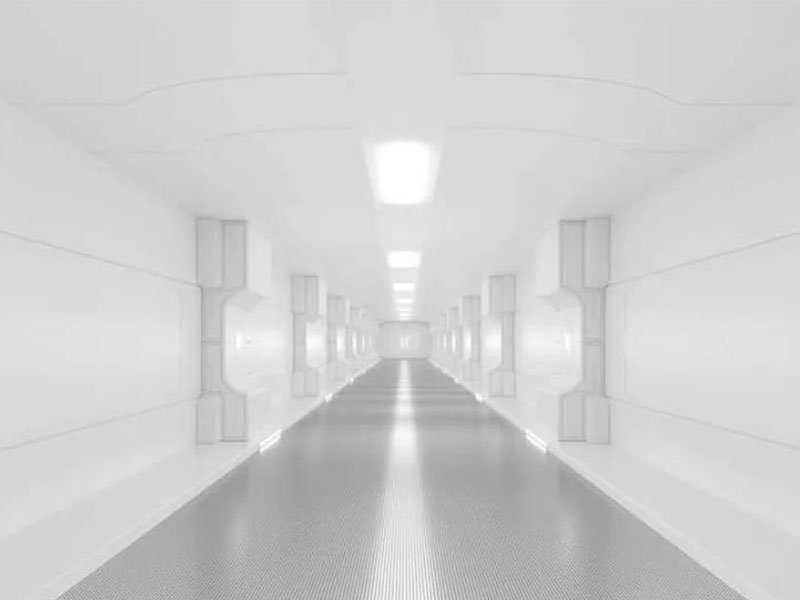
In general, the design features of clean room plate type primary filters are as follows:
1. The folding primary filter adopts a welded wire mesh, which is treated with surface anti-rust and can effectively fix the linear pleated structure.
2. The galvanized iron mesh of the primary filter is attached to the air outlet surface of the filter material, which can protect the filter material from being blown and deformed due to excessive wind pressure, ensuring that all filter material surfaces can be fully utilized.
3. The primary filter adopts a gradient structure, providing a larger filtration area. The filtration area of the folded filter is 5 times that of the general flat filter.
4. The primary filter can use ordinary or moisture-proof paper frames to reduce costs. After use, the paper frame filter can be incinerated, which is pollution-free and meets environmental protection requirements.
5. The folded primary filter has a variety of filtration efficiencies to choose from, generally G1-G4.
The clean room plate primary filter is mainly used for primary filtration of fresh air and air conditioning systems, effectively filtering particles, dust and various suspended solids above 5.0μm. It can be used as a primary filter for air intake and exhaust devices, and can be used for primary or intermediate filtration of air conditioning filtration systems. This filter is widely used in ventilation and air conditioning systems of large civil buildings such as office buildings, hospitals, shopping malls, gymnasiums, and airports. When used with medium efficiency filters, it can effectively protect expensive high efficiency or ultra-high efficiency filters.
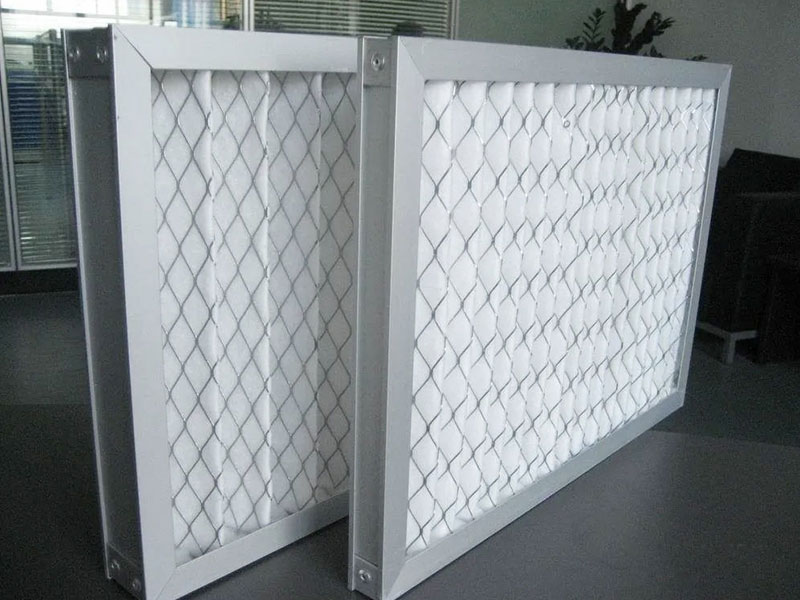
Through its unique design features and application areas, clean room plate type primary filter can effectively improve air quality, which is of great significance for protecting people's health and comfort.
Cleanrooms are carefully designed, dedicated spaces with extremely low concentrations of airborne particles. Manufacturers of pharmaceuticals, electronic components, and other high-value, high-demand products produce and process them in cleanrooms to prevent contaminants from interfering with product performance. Airflow management plays a vital role in maintaining the efficient operation of cleanrooms, ensuring that air flows properly and cleanly, thereby protecting the integrity and reliability of the products.
01. Airflow Type
Airflow management professionals must choose among three types of airflow.
Unidirectional Systems
Unidirectional systems move air in one direction, usually vertically, but less often horizontally. Airflow moves when air from a FFU suspended from the ceiling blows into the exhaust system below. All inlets and outlets are arranged in parallel to ensure consistent airflow, minimizing the possibility of contaminants affecting the room.
Engineers must carefully design rooms to ensure the proper layout and reduce the possibility of insufficient airflow or turbulence, otherwise it will reduce the efficiency of equipment operation and thus reduce the effectiveness of contamination control. Using laminar airflow hoods in clean rooms can reduce turbulence. They are made of materials such as stainless steel and will not increase the number of particles in the environment due to shedding.
Inadequate airflow can cause dead zones or air pockets, where air moves too slowly and contaminants accumulate in them and may be transferred to critical equipment.
Non-unidirectional airflow management
While air in a unidirectional cleanroom setting flows in one direction, in rooms with non-unidirectional airflow management, air flows through multiple paths, some of which may include paths around objects. In addition, high turbulence, filtration, and circulation maintain the necessary cleanliness.
Non-unidirectional strategies often result in air forming vortex shapes, especially when clean air enters and mixes with existing air. While this involves filtration, air flow is also an important factor because its randomness and the amount of air passing through the filter prevent contaminants from exceeding safe levels.
Mixed
Some cleanrooms have critical areas (such as those associated with sensitive materials or components) where laminar flow hoods maintain unidirectional airflow. However, in the rest of the room, filters enable non-unidirectional airflow.
Engineers planning to design for mixed airflow should carefully study the user's situation and work tasks as well as other specific factors that affect the type and level of potential contaminants.
02. Airflow management depends on product requirements
Although people know the difference between these three airflow types, they must also choose the right airflow type based on the products produced in the environment. There are nine cleanroom cleanliness levels, each based on the level of particle contaminants allowed. Furthermore, each level is usually 10 times less than the level below.
For example, medical device and consumer electronics manufacturers most often choose Class 7 and Class 8 cleanrooms. Class 8 cleanrooms allow 100,000 particles per cubic meter of air, but the number allowed in a Class 7 environment is only 10,000.
Certain classes of cleanrooms also have specific must-have features. For example, cleanrooms of Class 7 or above must have a positive pressure inlet to stop particulate matter from spreading into the environment. In addition, all workers must enter a gowning room and wear necessary equipment before entering the controlled environment.
Once decision makers understand the specific cleanroom airflow requirements for their products, they should seriously consider using industrial monitoring equipment to verify that the environment is staying within the required parameters. It can also tell decision makers which production links will cause the most air quality challenges. This information can give them the information they need to take proactive action instead of facing a situation where contaminants are poorly controlled due to lack of awareness.
03. Industry conditions determine cleanroom airflow requirements
Those involved in maintaining proper cleanroom airflow must also understand industry details that may affect their work. For example, under the previous federal standard 209E framework, there were three fewer cleanroom classes. However, the United States and Canada now follow the requirements of ISO 14644-1. It expresses the decimal logarithm of particles 0.1 microns or larger per cubic meter of air. However, some cleanroom classes have additional details.
In a Class 7 cleanroom, the concentration of particles 0.5 microns or larger must be less than 352,000, and the number of particles 1-4 microns in the room must not exceed 83,200. The number of particles 5 microns and above must be less than 2,930.
Familiarity with specific industry standards and regulatory requirements is the best way to prioritize safety and prevent product recalls, fines, or other adverse consequences due to poor airflow management.
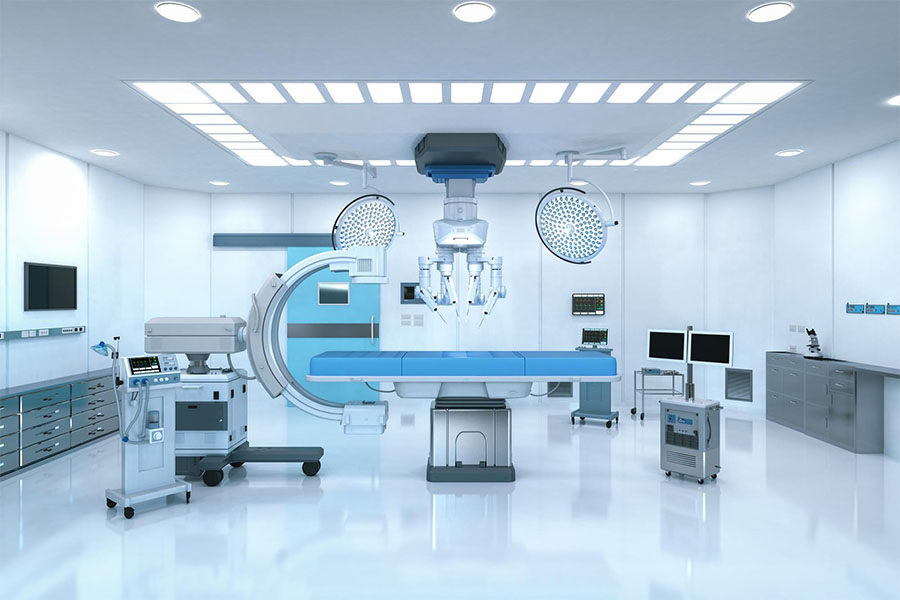
04. Technology can increase awareness and bring improvements
Airflow management professionals should also consider how technology can help them make strategic facility improvements. Monitoring sensors are great for day-to-day monitoring, but there are options that can help people make meaningful choices at other times.
Parties involved in the construction of a new plant or the upgrade of an existing one might use digital twin technology to test various options before finalizing a plan. This approach can avoid costly mistakes or incorrect assumptions about the type and location of filtration equipment or other details.
Or, people can conduct airflow visualization studies to verify that they are getting the desired results based on the cleanroom setup. These tests involve introducing smoke or fog into the environment perpendicular to the airflow. Auditors watch its movement to see if it stays or concentrates in specific areas. Related reports can tell managers whether their facilities are following airflow management best practices.
Exploring recent advances in cleanroom airflow is also valuable in showing people what’s possible. One example comes from a company whose solution does more than just keep the room within preset ventilation parameters. It makes real-time changes based on contamination fluctuations in the cleanroom. This approach saves money and reduces emissions by increasing ventilation in needed areas.
Maintaining proper cleanroom airflow is critical for production quality control, consumer safety, and compliance with regulatory requirements. People should understand the connections between changes in the facility that may affect airflow or contaminant levels and require specific actions to resolve the issue.
Cleanroom grade standards
The grades of cleanrooms are usually divided according to the number and size of particles allowed in the air. Internationally, ISO 14644 is usually used for grade classification. According to this standard, the grades of cleanrooms are from high to low: ISO 1-9.
It should be noted that cleanroom standards can vary depending on the specific industry and application. In semiconductor chip production, cleanroom standards are usually more stringent to ensure that the quality and performance of the chips produced meet expectations.
Cleanroom levels can be divided into: Class 1 > Class 10 > Class 100 > Class 1000 > Class 10000 > Class 100000 > Class 300000.
Class 1 cleanrooms are mainly used in the microelectronics industry for manufacturing integrated circuits, and the precision requirements for integrated circuits are submicron.
Class 10 cleanrooms are mainly used in the semiconductor industry with a bandwidth of less than 2 microns.
Class 100 cleanliness is widely applicable and can meet the cleanliness needs of most industries. It can be used for aseptic manufacturing technology in the pharmaceutical industry. This cleanroom can be used for surgery for the manufacture of transplants and integrators, as well as isolation treatment of patients who are particularly sensitive to bacterial infections.
Class 1000 cleanrooms are mainly used for the production of fine optical products, and are also used for testing, assembly of aircraft gyroscopes, assembly of fine micro bearings, etc.
Class 10000 cleanrooms can be used for the assembly of hydraulic equipment or pneumatic equipment, and in some cases are also used in the food and beverage industry. In addition, Class 10000 cleanrooms are also widely used in the medical industry.
The permissible particle concentration of 0.5um in a Class 1000 clean room is less than 35200 (pc/m3), and the permissible particle concentration of 5um is less than 293 (pc/m3). 2. The permissible particle concentration of 0.5um in a Class 10,000 clean room is less than 352000 (pc/m3), and the permissible particle concentration of 5um is less than 2930 (pc/m3).
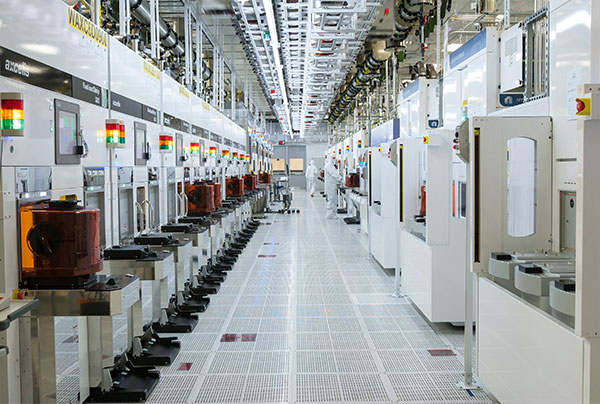
Safety considerations
The decoration of semiconductor cleanrooms must meet safety requirements. Generally speaking, there are a large number of flammable and explosive substances in semiconductor cleanrooms, so the relevant national safety regulations, such as fire prevention and explosion prevention, should be followed during decoration. In addition, environmental pollution and the health and safety of staff should also be considered to ensure that the decoration materials meet national standards and will not cause harm to human health.
Cleanroom air treatment system
Semiconductor cleanrooms require air treatment systems to ensure the cleanliness of the air in the workshop. The air treatment system is mainly composed of air filters, air supply systems, return air systems and exhaust systems. Among them, air filters are an important component that can effectively remove particulate matter and microorganisms in the air.
Floor, wall and ceiling decoration
In the decoration of semiconductor cleanrooms, the decoration of floors, walls and ceilings is very important because these areas are susceptible to pollution. The floor should be made of wear-resistant, anti-static and easy-to-clean materials, such as Epoxy self-leveling floor or PVC plastic floor; the walls and ceilings should be made of corrosion-resistant, anti-static and easy-to-clean materials, such as aluminum plates, stainless steel plates, glass curtain walls, etc.
Layout of electrical equipment such as lamps and sockets
In the decoration of semiconductor cleanrooms, the layout of lamps and sockets is also very important. In order to prevent pollutants such as dust and microorganisms from entering the workshop, these devices should be installed on the ceiling or above the wall height, and anti-static and non-powder-shedding materials should be selected.
Doors, windows, clean workbenches and other facilities
In the decoration of semiconductor cleanrooms, doors, windows, clean workbenches and other facilities also need special consideration. Doors and windows must be made of materials with good sealing performance and easy to clean, such as stainless steel doors and windows; clean workbenches should be made of materials that do not shed powder, slag particles, are corrosion-resistant and easy to clean, such as stainless steel workbenches.
The electronic chip clean room is a special industrial building designed to effectively control key parameters such as air particle concentration, microbial count, temperature and humidity, air flow speed and air pressure in the workshop. The precise control of these conditions ensures the smooth progress of the production process and the high standard of product quality to meet the strict requirements of electronic chip manufacturing.
1. Equipment selection
1. Air treatment equipment
Air treatment equipment is one of the key factors in maintaining the cleanliness of the workshop. Its main function is to filter and purify pollutants in the workshop, and at the same time adjust parameters such as temperature, humidity and air pressure in the workshop to meet the requirements of production process and product quality.
2. Air shower room
The air shower room is an important equipment in the clean workshop, which is mainly used to remove dust, sterilize and purify personnel, materials and equipment entering the workshop. The electronic chip clean workshop should be equipped with an air shower room to reduce the entry of external dust, microorganisms and other pollutants into the workshop. The size and number of air shower rooms should be designed according to the actual situation of the workshop to ensure that it can meet the cleanliness requirements of the workshop.
3. Clean room dressing room
The clean room dressing room is an isolation area inside and outside the clean room. The staff needs to wear clean clothes, gloves, shoe covers and other protective equipment in this area to ensure that the personnel entering the clean room will not bring in external pollutants.
4. Air shower
The air shower is used to perform air showers on personnel entering the clean room to remove particles and bacteria that may be carried by the personnel and ensure the cleanliness of the workshop.
5. Air purifier
The air purifier can purify pollutants such as dust, bacteria, viruses, etc. in the workshop air to ensure the cleanliness of the workshop.
6. Temperature and humidity control system
The temperature and humidity control system can control parameters such as temperature, humidity and air pressure in the workshop to ensure that the workshop environment meets the requirements of production process and product quality.
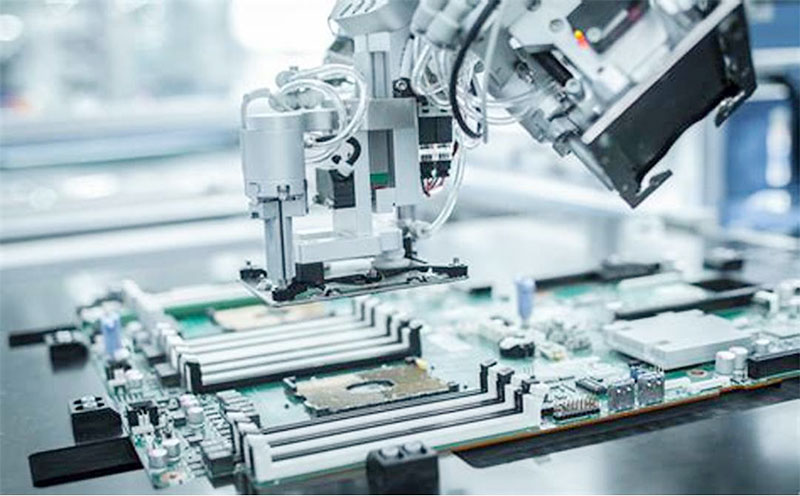
2. HVAC system
1. Air conditioning system
The air conditioning system is the main HVAC equipment in the electronic chip clean workshop. Its function is to adjust parameters such as workshop temperature, humidity and air flow speed to maintain the cleanliness and comfort of the workshop.
2. Air supply system
The air supply system sends clean air from the air conditioning equipment into the workshop to form a relatively static air flow layer to maintain the cleanliness of the workshop.
3. Exhaust system
The exhaust system of the electronic chip clean workshop is one of the key equipment of the entire workshop. Its function is to exhaust pollutants in the workshop and maintain the cleanliness of the workshop.
At present, there are two main types of exhaust systems in the electronic chip clean workshop, namely local exhaust systems and global exhaust systems. The local exhaust system uses a single device to exhaust local process equipment, which can achieve higher air volume and static pressure, and is suitable for workshops with higher requirements for air cleanliness. The global exhaust system includes the entire workshop in the exhaust range, which is mainly used in occasions where the requirements for workshop temperature, humidity and cleanliness are not very high.
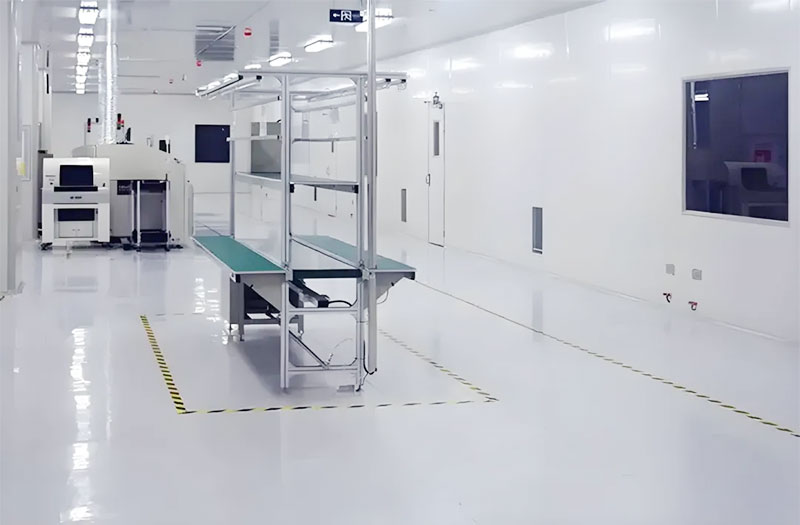
3. Decoration materials
When choosing decoration materials for electronic chip clean workshops, it is necessary to consider their impact on the clean environment, and also ensure that they have anti-static capabilities. It is recommended to choose anti-static floors, walls, ceilings and other materials.
For the corners of walls and floors, arc designs should be used to reduce dust accumulation.
4. Lighting design
In the lighting design of electronic chip clean workshops, lighting equipment with anti-static functions should be selected. It is recommended to use cold light sources or LED lamps to reduce heat radiation and heat dissipation. At the same time, it is also necessary to consider the uniformity and brightness of lighting to meet work needs.
5. Waste gas and wastewater treatment system
During the production process of the electronic chip clean workshop, a large amount of waste gas and wastewater will be generated. In order to ensure the cleanliness of the environment and ecological protection, a corresponding waste gas and wastewater treatment system must be configured. The waste gas treatment system mainly includes the exhaust system and the tail gas treatment system, and the wastewater treatment system mainly includes the sewage collection, pretreatment and treatment system.
6. Pure water system
A large amount of pure water is required in the production process of the electronic chip clean workshop, so a pure water system needs to be configured. The pure water system should include a pre-treatment system and a purification system to ensure that the supplied pure water can meet the production requirements of the workshop.
7. Gas supply system
A large amount of nitrogen, hydrogen and other gases are required in the production process of the electronic chip clean workshop, so a corresponding gas supply system needs to be configured. The gas supply system should include gas storage tanks, gas filtration, gas drying and other equipment to ensure the quality and stability of the supplied gas.
From September 4 to 7, 2024, the 14th Bangkok RHVAC, a biennial event, hold at the Bangkok International Trade and Exhibition Center. At that time, KLC presented HVAC series of Air filter and Equipment products at the exhibition.
The successful holding of the 2024 Bangkok RHVAC is not only a collision and integration of technical exchanges and cooperation, but also an in-depth exploration of future development trends. KLC is an air filter and air purification equipment enterprise intergrating R&D, production and sales to provide comprehensive and advanced clean air solutions and services for industries all over the world, and jointly promote the high-quality development of the refrigeration industry.
At the exhibition, KLC attracted the attention of many customers and partners with its innovative air filtration products and solutions. KLC business personnel combined on-site exhibits and video demonstrations to allow visitors to have a deep understanding of the application and installation of the filtration system.
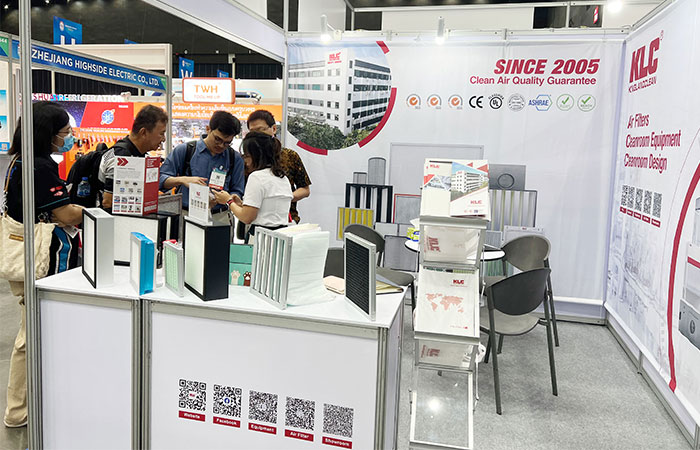
The Bangkok RHVAC+E&E 2024 exhibition provides new opportunities for the future development of KLC. KLC will continue to be committed to technological innovation and market expansion to meet the growing needs of customers. We look forward to exploring the cutting-edge trends of the industry with more colleagues in the industry at future exhibitions, and jointly promoting progress in the field of HVAC! Thank you to all customers and partners who visited our booth, and thank you for your attention and trust in KLC.
Dear customers and partners,
We sincerely invite you to attend the upcoming RHVAC 2024 exhibition in Bangkok! As a professional filter and cleanroom solution provider, we will showcase our latest air purification products to help you create a dust-free environment and improve the cleanliness of your workplace.
Exhibition information:
Date: 4-7 SEP 2024
Location: EH 98-100 BITEC,BANGKOK THAILAND

At this exhibition, we will show how to help various industries achieve stricter cleanliness standards through innovative and efficient filtration systems. We look forward to sharing our expertise with you and discussing how to provide customized solutions for your business.
Please arrange time to visit our booth and communicate with our team in depth. Looking forward to seeing you at the exhibition and moving towards a cleaner future together!
Best wishes
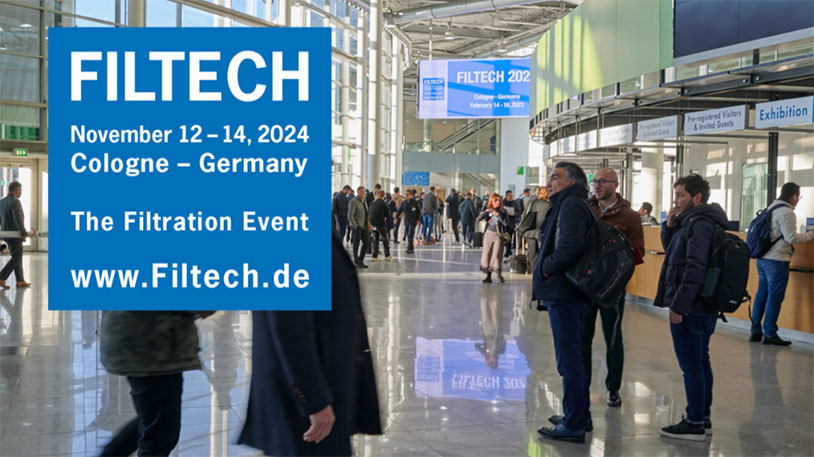
From November 12 to 14, 2024, the KLC team participated in the highly anticipated FILTECH exhibition in Cologne, Germany. As an important event in the field of global filtration and separation technology, this exhibition attracted industry leaders, experts and innovation pioneers from all over the world to gather together to discuss the latest technological developments and market trends of filtration equipment.
During the three-day exhibition, KLC displayed the latest products and solutions in the field of filtration technology such as AC FFU, high temperature Separator Filter, and high frequency bag filters. The KLC booth attracted the attention of many visitors, and the attendees showed great interest in our innovative technologies.
FILTECH is a global event and platform that focuses on the filtration industry and adjacent sectors. It is the largest and most significant event of its kind worldwide, showcasing the latest technological advancements and innovations in the field of filtration and separation. FILTECH brings together experts, researchers, and industry professionals from various sectors to address pressing issues such as air pollution, climate impact, health hazards posed by germs, and optimizing efficiency in solid and liquid separation processes. From technologies for air filtration to solutions for solid and liquid separation, FILTECH offers tailored solutions to meet the diverse needs of industries across the board. It provides a platform to explore targeted solutions for all filtration challenges, driving progress and excellence in filtration and separation technologies.
The FILTECH exhibition provides us with an important platform to understand industry trends. By participating in multiple technical forums and seminars, we have obtained valuable information on the latest research results and development directions of filtration and separation technology. These insights will help KLC maintain a competitive advantage in future product development and market strategy.
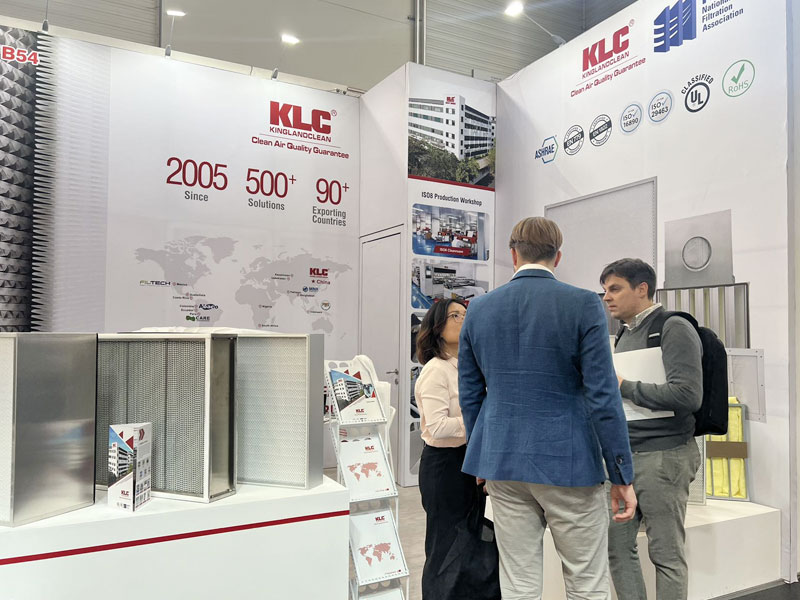
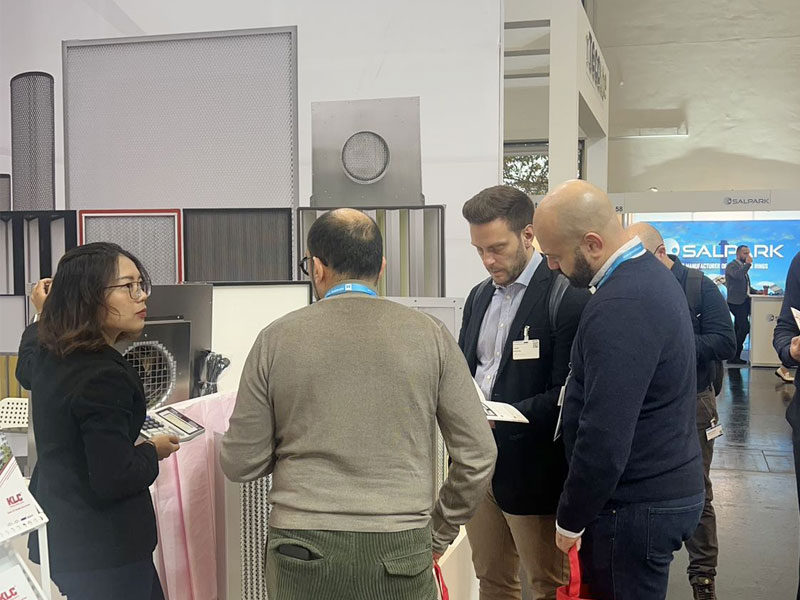
Overall, KLC's experience of participating in the 2024 FILTECH exhibition was extremely successful. We not only demonstrated the company's technical strength, but also strengthened our connections with all parties in the industry. Thank you to all friends who visited our booth, and look forward to jointly promoting the development of filtration and separation technology in future cooperation. We look forward to seeing you again at the next exhibition and exploring more possibilities together!
High-efficiency air outlets are ideal terminal filtration devices and are widely used in the pharmaceutical, health, electronics, chemical and other industries. In order to verify whether the clean room can meet the cleanliness requirements, it is necessary to test the clean room and high-efficiency air outlets, so its detection is very important.
How to measure the air volume of high-efficiency air outlets:
1. You can use the air volume hood to directly aim at the nozzle for one-time measurement. Since your nozzle has many small holes (to make the air volume uniform) and there is a grille, then your anemometer can be kept 3-5 cm away from the nozzle. If you have a thermal anemometer, try to face the gap instead of the grille, and measure the average value by the grid method. The same cross-section can be measured.
2. You can measure at multiple points at a distance of 2 times the width of the diffuser from the air outlet. The measuring points should be like a grid and then the wind speed is averaged. The sizes of these vents are similar. Use tinplate or even plastic plate to make a barrel that is slightly larger than the cross-section of the air outlet, and then cover the barrel on the air outlet when measuring, and then use the anemometer to measure the nozzle of the barrel at multiple points and calculate the average value.
3. Clean air can be obtained through the clean air conditioning circulation fan, high-efficiency air filter, medium-efficiency filter, and primary air filter. The cleanliness is different, and the wind flow direction is different. Of course, it is also necessary to supplement some fresh air through the fresh air outlet, otherwise people will feel stuffy inside.
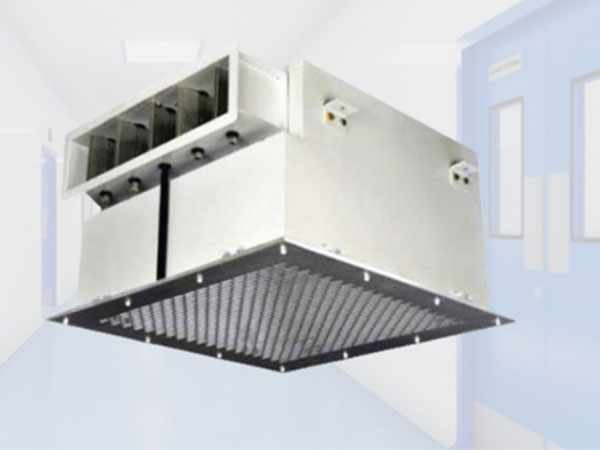
Air volume measurement of high-efficiency air outlet:
1. The detection method of high-efficiency air outlet uses active sampling and passive sampling. Active sampling uses filtering method and impact method. The filtering method allows a certain amount of air to pass through an analytical filter.
2. The impact method can use Anderson sampler, Lute centrifugal sampler, and slit sampler. Passive sampling uses the landing method. The principle of diffusion of open agar plates with suspended particles is used.
3. Of course, with the development of science and technology today, some more sophisticated detection instruments can also be used to quickly detect it.
- Automotive Engine Rubber Parts8
- Automotive Lamps Rubber Parts5
- Automotive Suspension Rubber Parts2
- Automotive Wiring Harness Rubber Parts3
- Extrusion Sealing Strip1
- Industrial Electrical Rubber Parts3
- Industrial Scanners2
- Industrial electrical control3
- Industrial slings4
- Machine Tool Blades1
- Membrane Products1
- Motor1
- Racecource Rubber Products3
- Rubber Forklift Attachments1
- Rubber and plastic Parts1
- Seal2
- Tubular Motor2
- industrial hose1
- mold1
- plc2
- pump1
- racking2